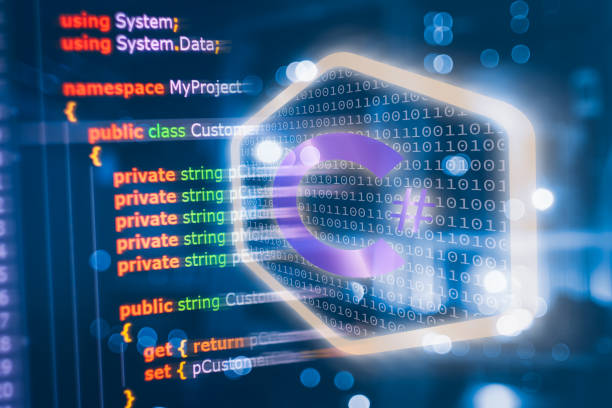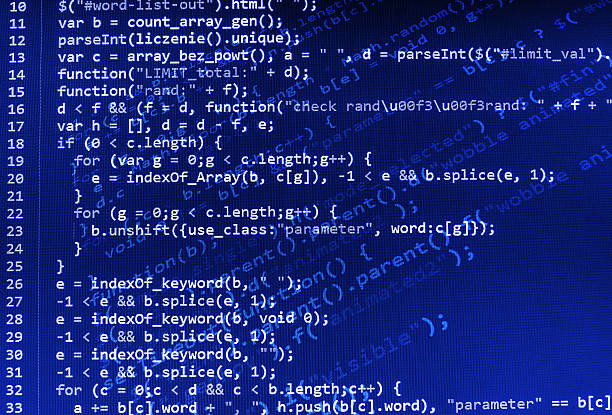C Language

In the vast universe of programming languages, some stars burn brightly for a season and then fade, while others become the gravitational center around which entire galaxies of technology revolve. The C Language is unequivocally one of the latter. Though it was created over half a century ago, C remains one of the most powerful, influential, and relevant programming languages in the world today.
For aspiring developers, learning C is like an architect studying the principles of physics and materials. It’s not just about learning a language; it’s about understanding the fundamental machinery of computation itself. This guide will walk you through the essential aspects of the C language, from its storied history to writing and executing your very first program. Whether you’re a complete beginner or a developer looking to understand the roots of your craft, you’ve come to the right place.
History Of C
To truly appreciate the C Language, we must first travel back in time to the legendary Bell Labs in the early 1970s. It was here that a brilliant computer scientist named Dennis Ritchie developed C between 1972 and 1973. But C didn’t appear out of thin air; it was an evolution.
Its direct predecessor was a language called B, written by Ken Thompson, which in turn was inspired by a language called BCPL (Basic Combined Programming Language). The primary motivation for creating C was the need for a powerful, efficient language to develop the UNIX operating system. The original UNIX kernel was written in assembly language, which was fast but not portable across different computer architectures. C provided the perfect middle ground: it was low-level enough to interact directly with hardware and manipulate memory, yet high-level enough to be written and understood with relative ease and, most importantly, be portable.
This marriage of performance and portability was a game-changer. The UNIX operating system was soon rewritten in C, a move that untethered it from specific hardware and allowed it to become one of the most influential operating systems of all time.
In 1978, Brian Kernighan and Dennis Ritchie published the first edition of The C Programming Language. This book, affectionately known as “K&R,” served as the language’s informal specification for years. Later, to ensure consistency across different compilers and platforms, the American National Standards Institute (ANSI) formalized the language in 1989, creating what is known as “ANSI C” or “C89”. This standard has since been updated by the International Organization for Standardization (ISO), but the core of the language remains true to Ritchie’s original vision.
“C is quirky, flawed, and an enormous success.” – Dennis Ritchie
Why Learn C?
In an era of high-level, feature-rich languages like Python and JavaScript, you might wonder, “Why should I learn a language from the 1970s?” The reasons are as compelling today as they were decades ago.
- A Foundational Pillar: C is the lingua franca of programming. Many modern languages, including C++, C#, Java, JavaScript, and Python, borrow their syntax and core concepts from C. Learning C gives you a deep understanding of principles like data types, operators, and control structures that are universally applicable.
- Understanding How Computers Really Work: High-level languages abstract away the complex inner workings of a computer. C does not. When you learn C, you are forced to engage with fundamental concepts like memory management, pointers, and memory addresses. You learn how your program actually uses RAM, which is an invaluable skill that makes you a better programmer in any language.
- Unmatched Performance: Because C is a “middle-level” language, it provides an almost unmatched level of performance. It compiles directly to machine code, giving developers fine-grained control over system resources. This is why C is the language of choice for performance-critical applications like operating systems, game engines, and embedded systems.
- The Language of Systems: If you want to work on software that interacts closely with hardware, C is essential. It’s used to write:
- Operating Systems: The kernels of Linux, Windows, and macOS are all written predominantly in C.
- Embedded Systems: The firmware in your car, microwave, drone, and IoT devices is likely written in C.
- Compilers and Interpreters: The official Python interpreter, CPython, is written in C.
- Gateway to Other Languages: Once you master C, learning languages like C++ becomes significantly easier, as C++ was built as a direct extension of C.
Writing Your First Program in C Language
The best way to learn is by doing. In programming tradition, the first program you write is “Hello, World!”. This simple program will print the text “Hello, World!” to your screen.
Let’s look at the code.
Demo Code: hello.c
#include <stdio.h>
// This is the main function where the program execution begins
int main() {
// printf() is a library function that prints output to the screen
printf("Hello, World!\n");
// return 0 indicates that the program executed successfully
return 0;
}
This might look simple, but every single line has a purpose. Let’s break it down.
Structure of the C program
The “Hello, World!” program gives us a perfect template for understanding the basic structure of any C program.
- Preprocessor Directive (
#include <stdio.h>):- The line starting with
#is a preprocessor directive. The preprocessor is a program that runs before the compiler. #includetells the preprocessor to include the contents of a file in our program.<stdio.h>is the name of a header file. It stands for Standard Input/Output Header. This file contains the declarations for standard input and output functions, such asprintf(), which we need to display text on the screen. Without this line, the compiler wouldn’t know whatprintf()is.
- The line starting with
- The
main()Function (int main() { ... }):- In C, program execution always begins in the
main()function. It is the entry point of your program. Every C program must have exactly onemain()function. intbeforemainis the return type. It specifies that themainfunction will return an integer value to the operating system when it finishes.- The parentheses
()aftermainindicate that it is a function. - The curly braces
{}define the beginning and end of the function’s code block. All the code that belongs to this function is written inside these braces.
- In C, program execution always begins in the
- The Statement (
printf("Hello, World!\n");):- This is the line that does the actual work.
printf()is a function from thestdio.hlibrary that “prints” formatted output to the console.- The text inside the double quotes
"Hello, World!\n"is called a string literal. This is the content that will be printed. \nis a special escape sequence that represents a newline character. It tells the console to move the cursor to the next line after printing the text.- The semicolon
;at the end marks the end of the statement. In C, almost every statement must end with a semicolon.
- The Return Statement (
return 0;):- This line signals the end of the
mainfunction. - The
return 0;statement returns the integer value0to the operating system. By convention, a return value of0means that the program executed successfully without any errors. A non-zero value typically indicates that an error occurred.
- This line signals the end of the
Execute C Programs
Writing the code is only the first step. To bring it to life, you need to compile and run it. Here’s the general workflow:
- Write the Code: Use a text editor (like VS Code, Sublime Text, or even a simple one like Notepad) to write your C code and save it with a
.cextension (e.g.,hello.c). - Compile the Code: C is a compiled language, which means your human-readable source code (
.cfile) must be translated into machine-readable object code by a program called a compiler. The most common compiler for C is GCC (GNU Compiler Collection).To compile your program, open a terminal or command prompt, navigate to the directory where you saved your file, and type the following command:gcc hello.c -o helloLet’s break down this command:
gcc: This invokes the GCC compiler.hello.c: This is the name of your source code file.-o hello: This is an option that tells the compiler to name the output executable filehello. If you omit this, GCC will create a default executable file nameda.out(on Linux/macOS) ora.exe(on Windows).
If there are no errors in your code, this command will silently create a new file named
hello(orhello.exe) in the same directory. This is your executable program. - Run the Program: To run your compiled program, type the following command in the terminal:On macOS or Linux:
./hello(The
./tells the shell to look for the program in the current directory.)On Windows:
helloOnce you press Enter, you should see the glorious output:
Hello, World!
Congratulations! You have just written, compiled, and executed your first C program.
Difference Between C and C++
As you continue your programming journey, you will inevitably encounter C++. Bjarne Stroustrup developed C++ at Bell Labs in the early 1980s as an extension of C. His goal was to add object-oriented programming (OOP) capabilities to the power and efficiency of C.
While C++ can run almost all C code, they are distinct languages with different philosophies.
“C makes it easy to shoot yourself in the foot; C++ makes it harder, but when you do, it blows your whole leg off.” – Bjarne Stroustrup
Here’s a table summarizing the key differences:
| Feature | C Language | C++ Language |
|---|---|---|
| Programming Paradigm | Procedural. Focus is on functions and procedures. | Multi-paradigm. Supports procedural, object-oriented (OOP), and generic programming. |
| Object-Oriented (OOP) | Does not support OOP features like classes, inheritance, polymorphism, and encapsulation. | Fully supports OOP, which is one of its core design features. |
| Data Security | Data is not well-secured as it is separate from the functions that operate on it. | Provides better data security through encapsulation, where data and methods are bundled into objects. |
| Standard Library | Provides the C standard library (e.g., stdio.h, stdlib.h). |
Includes the C standard library plus its own much larger Standard Template Library (STL). |
| Keywords | Has a smaller set of keywords (around 32). | Has a larger set of keywords (includes all of C’s keywords plus many more). |
| Approach | Follows a top-down programming approach. | Primarily follows a bottom-up programming approach, focusing on objects first. |
| File Extension | .c |
.cpp, .cxx, or .cc |
In essence, C is a procedural language perfect for system-level programming, while C++ is an extension that adds object-oriented features, making it suitable for building large-scale applications.
Application of C Language
The influence of the C Language is so profound that you interact with C programs every single day, often without realizing it. Its applications are vast and varied:
- Operating Systems: The core of nearly every major operating system—including Windows, Linux, macOS, iOS, and Android—is powered by C.
- Embedded Systems: C’s ability to work closely with hardware makes it the undisputed king of embedded systems. It runs on microcontrollers in cars, home appliances, medical devices, and industrial machinery.
- Database Systems: The core storage engines of popular databases like MySQL, PostgreSQL, and Oracle are implemented in C for maximum speed and efficiency.
- Compilers and Interpreters: Many programming languages are “bootstrapped” using C. The interpreters for Python, Ruby, and PHP are written in C.
- Game Development: While modern game engines use C++, the performance-critical parts of rendering pipelines, physics engines, and asset management are often written in pure C.
- Networking and Telecommunications: The drivers for network cards and the core protocols that run the internet are implemented in C due to the need for low-latency data processing.
Conclusion: The Enduring Legacy of C
In a rapidly evolving technological landscape, the C Language stands as a testament to the power of simplicity, efficiency, and elegant design. It is a language that does not hold your hand; instead, it trusts you with direct control over the machine, for better or for worse.
Learning C is more than just adding another language to your resume. It’s a rite of passage that provides a profound education in the fundamentals of computer science. It teaches you to think about memory, to respect efficiency, and to understand the bridge between human logic and silicon reality.
The journey to mastering C may be challenging, but the rewards—in knowledge, skill, and deeper understanding—are immeasurable. So, open your text editor, #include <stdio.h>, and start building. The foundation of modern computing awaits.


